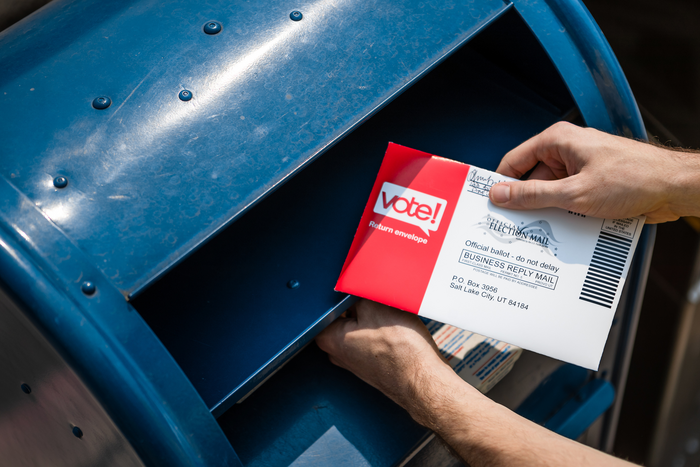A new study from BYU and the University of Virginia analyzed 400 million voter records from elections in 2014 and 2016 and found that minority citizens, young people, and those who support the Democratic Party are much less likely to vote than whites, older citizens, and Republican Party supporters. Moreover, those in the former groups were also more likely to live in areas where their neighbors are less likely to vote.

Credit: Photo by Alyssa Dahneke
A new study from BYU and the University of Virginia analyzed 400 million voter records from elections in 2014 and 2016 and found that minority citizens, young people, and those who support the Democratic Party are much less likely to vote than whites, older citizens, and Republican Party supporters. Moreover, those in the former groups were also more likely to live in areas where their neighbors are less likely to vote.
“We’re finding that the circumstances of other citizens who live around you plays an important role in voter turnout,” said Dr. Michael Barber, BYU professor of political science and co-author of the study. “Much of the country is segregated – especially by race and partisanship. Minorities are more likely to live around other minorities who are also less likely to vote. The same is true of voters of both parties. These patterns can create a situation that results in persistent patterns of lower turnout in certain communities for a variety of reasons.”
The study, recently published in the academic journal PLOS One, leveraged voter file data from analytics firm The Data Trust LLC. Researchers combined voter registration lists from all 50 states to create a file of approximately 400 million voter records across two election cycles; a midterm election in 2014 and the Presidential Election of 2016. The large dataset is unique in scope and breadth, allowing the researchers to confidently aggregate voter partisanship and turnout rates neighborhood-by-neighborhood in an unprecedented way.
The results highlight large and persistent gaps in voter turnout by race, age, and political affiliation. “We wouldn’t be able to look at voter turnout with such a fine-grained analysis without the use of these new, enormous national datasets,” said Barber.
The data show considerable gaps in voter turnout by race. In 2016, white citizens voted at a rate of between 9 and 15 percentage points higher than Black citizens, Asian citizens, and Hispanic citizens in the same election. In 2014, the gaps were even more significant. Whites voted at a rate 9 to 18 percentage points higher than these same minority groups.
Similar gaps existed by political party. Republicans were more likely to vote than Democrats in both 2016 and 2014.
The data also revealed that older citizens (60 years of age or older) voted at an astounding rate of roughly 40 percentage points higher than younger citizens (30 years of age or younger).
Barber and co-author Dr. John Holbein, former BYU professor and current professor of public policy at the University of Virginia, argue that some of the differences in voter turnout can be attributed to social context. When looking at the distribution of voter turnout by communities, both Black and Hispanic citizens, Democrats, and young people are more likely to live in what the authors call “turnout deserts” – voting precincts where voter turnout is significantly lower than the national average.
“Turnout deserts are located all across the country. It’s not as easy as simply saying they’re ‘only in rural or urban areas,’” says Barber. “People tend to live around people who are like them. If racial minorities are less likely to vote and they live around other minorities then the whole neighborhood is going to be less likely to vote.” This can have important political implications.
Such inequalities are unfortunately likely to persist if there is insufficient citizen-based pressure on elected officials (through, you got it – voting) to implement public policies to address and disrupt such patterns.
Journal
PLoS ONE
DOI
10.1371/journal.pone.0268134
Method of Research
Data/statistical analysis
Subject of Research
Not applicable
Article Title
400 million voting records show profound racial and geographic disparities in voter turnout in the United States
Article Publication Date
8-Jun-2022




